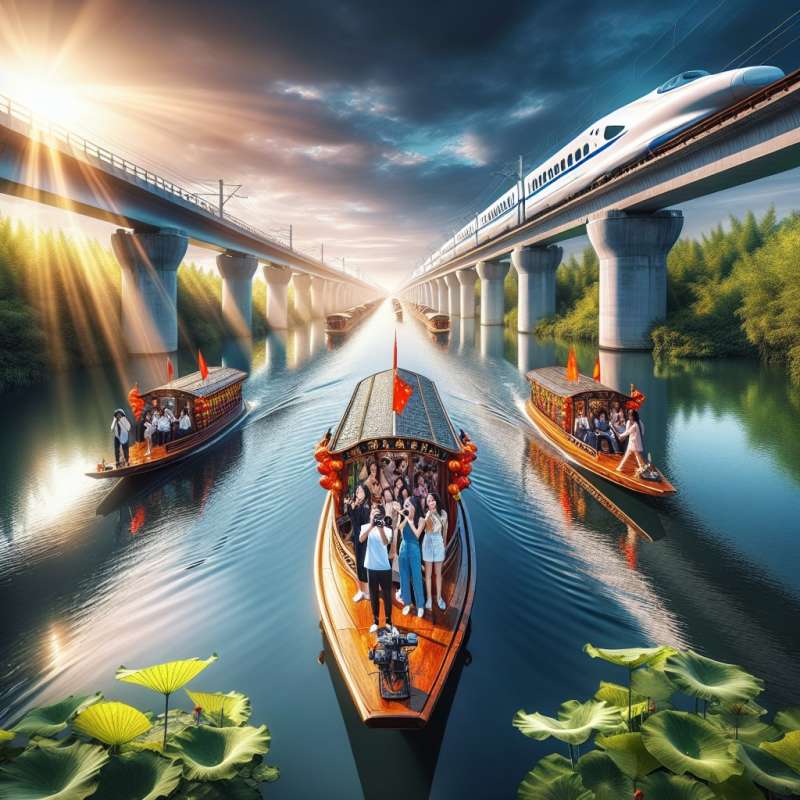
Grand Canal Introduction
The Grand Canal, a UNESCO World Heritage Site, is the world's longest artificial waterway, running over 1,100 miles from Beijing to Hangzhou in China.
Sui Dynasty Engineering
Conceived in the Sui Dynasty (581-618), the Grand Canal was a monumental project intended to link the Yellow and Yangtze Rivers for political and economic purposes.
Ming Dynasty Expansion
The Grand Canal reached its zenith during the Ming Dynasty, when it was expanded to transport grain and troops, bolstering the capital's economic strength and food security.
Complex Lock System
The canal's innovative lock system, a marvel of ancient engineering, allowed ships to navigate the vast differences in regional topography, setting a precedent for future waterway constructions.
Cultural Exchange Route
Besides economic goods, the Grand Canal facilitated a cultural exchange, spreading ideas, regional cuisines, and dialects along its path, shaping the diversity of Chinese culture.
Modern Canal Challenges
Today, the Grand Canal faces modern challenges such as pollution and traffic congestion, prompting conservation efforts to preserve its historical significance and utility.
Future Preservation Plans
China's latest initiatives include promoting the canal as a tourist destination and integrating it into modern transport plans to ensure its sustainability and legacy.Underwater Archaeological Finds
Divers discovered ancient shipwrecks in the Grand Canal, revealing artifacts and cargo that offer insights into trade and daily life across centuries.
Purpose of Grand Canal's creation?
Tourism and recreation
Link Yellow and Yangtze Rivers
Irrigation and fishing
Company